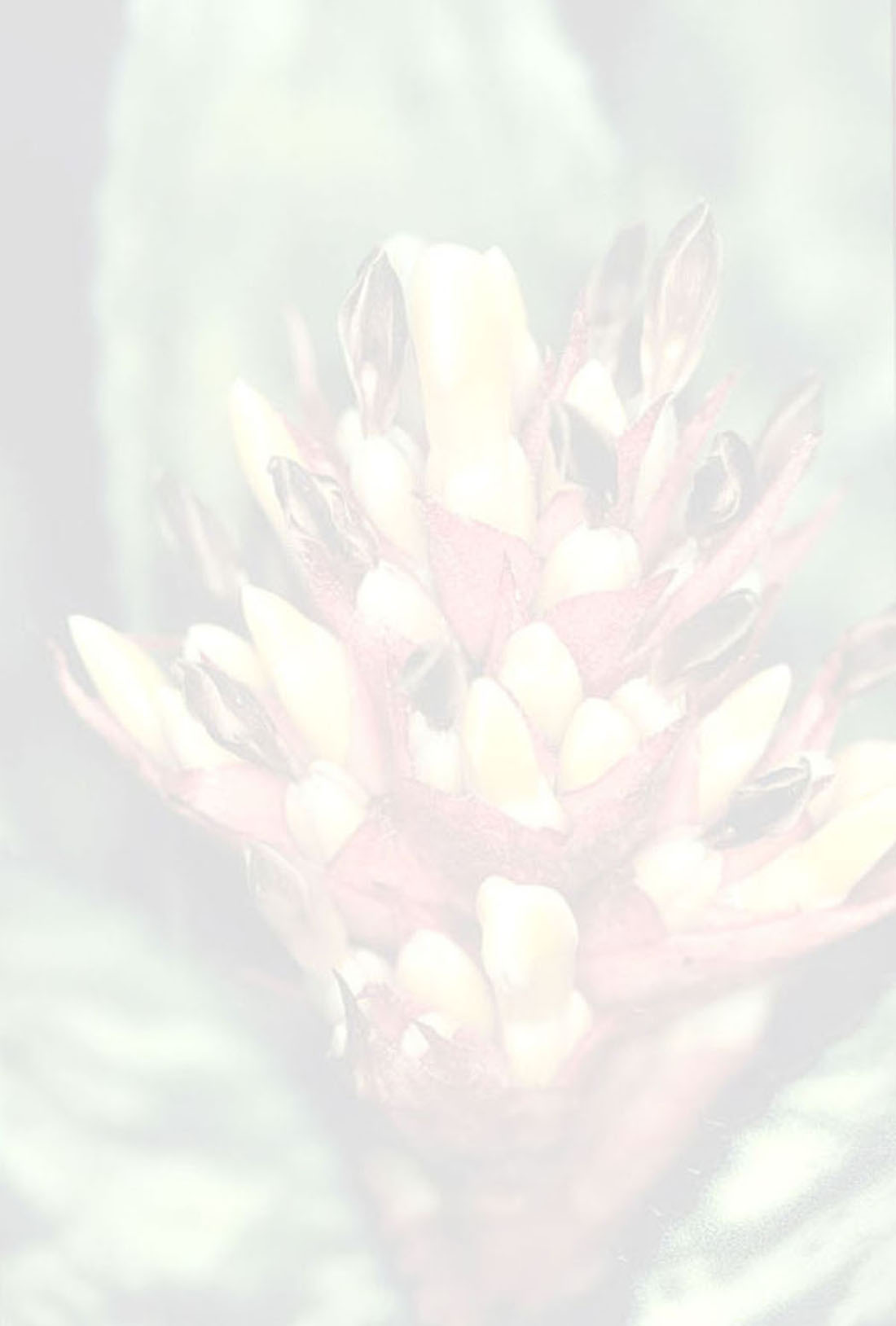

 Aechmea tuitensis Magana & E.J.Lott[as Aechmea tuitensis P. Magana & E.J. Lott]
Aechmea tuitensis Magana & E.J.Lott[as Aechmea tuitensis P. Magana & E.J. Lott]Diagnose: —A macvaughii L.B. Smith statura minore, foliis ad 56 cm longis, 2 - 4.5 cm latis, scapo erecto inflorescentia erecta sirnplici, 11-18 cm longa, bracteis floralibus 4.5 cm longis, petalis oblongis, obtusis et lobis stigmatis torsivis differt . Observations: —Aechmea tuitensis differs from A. macvaughii in several important characters (table 1), especially in its much smaller size, ovate triangular leaves, simple erect inflorescence, much
larger floral bracts and entire sepals. In addition, the leaves of our plant lack the waxy glaucous covering beneath which Smith (1964) mentions in the type description of A. macvaughii.
The proposed new species clearly belongs to subgenus Podaechmea Mez because of its lepidote inflorescences, pedicellate polystichous flowers, mucronate sepals and well-developed petal-appendages (Smith & Downs 1979). Its simple erect inflorescence differs from the amply compound and lax inflorescence common to the other five species of the subgenus.
Apparently our new species is the plant of which seeds were offered for propagation by Gardner (1984), Gardner (1984) refers to A. macvaughii as a "large plant with the leaves up to one rneter in length" as in the type description (Smith 1964 ), Gardner (1984) also describes A. macvaughii as having a simple spike, which is clearly shown in the accompanying photograph. However, according to the type description of A. macvaughii (Smith 1964), it has a pendulous, bipinnate inflorescenee, as does our material collected in Colima (Lott et al. 1925) in similar habitat to that mentioned in the type description (Smith 1964) . Therefore, it seems that there has been a confusion between the cultivated material made available to Gardner and the original description of A. macvaughii, which hitherto had been known only from the type locality. Additionally J. Utley (pers . comm. ) has seen both
our material of A. tuitensis and the material being distributed as A. macvaughii and concurs that they are the same.Edited from (01-01-2015): Phytologia 59: 221-223.,. (1986)